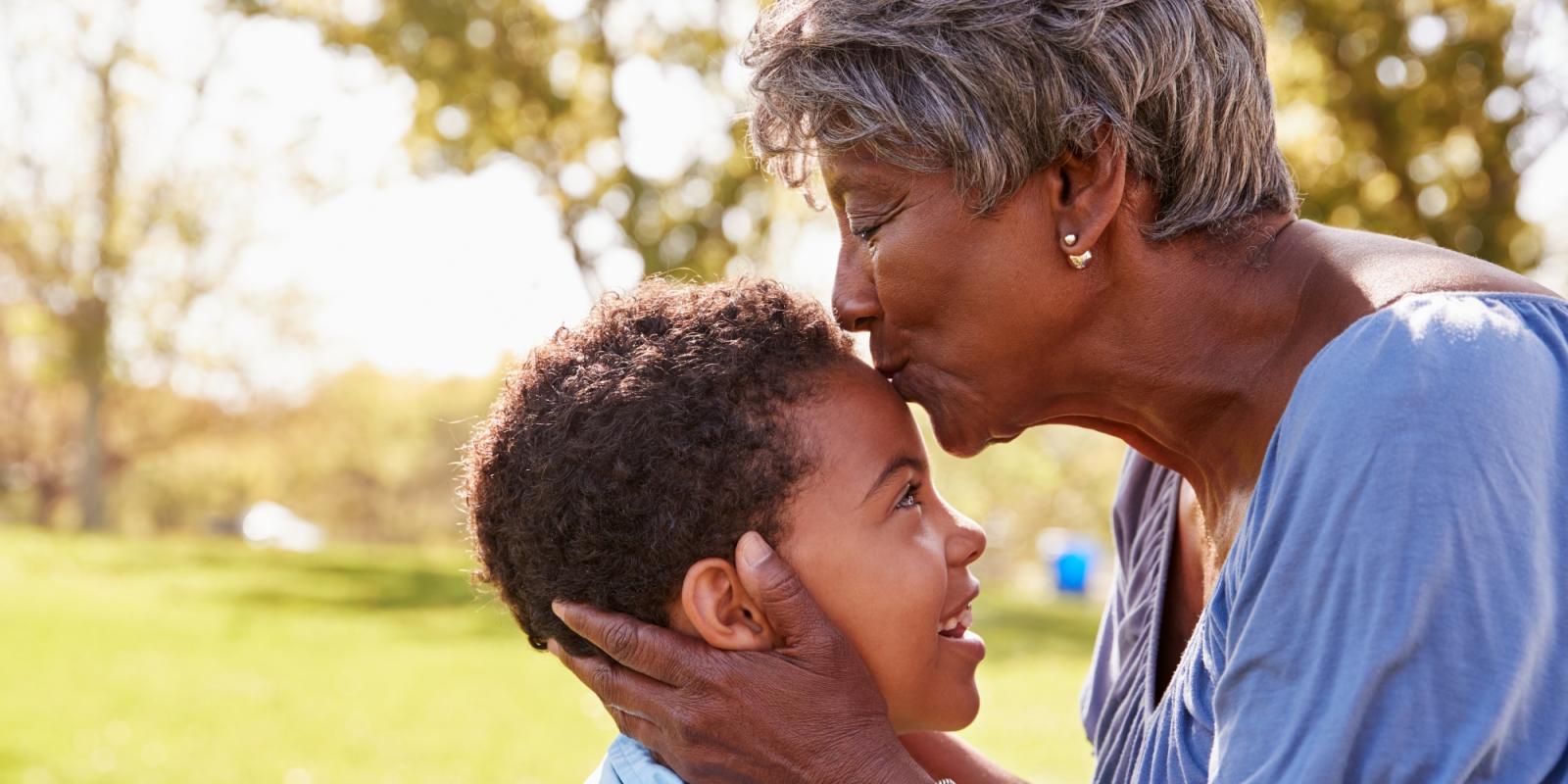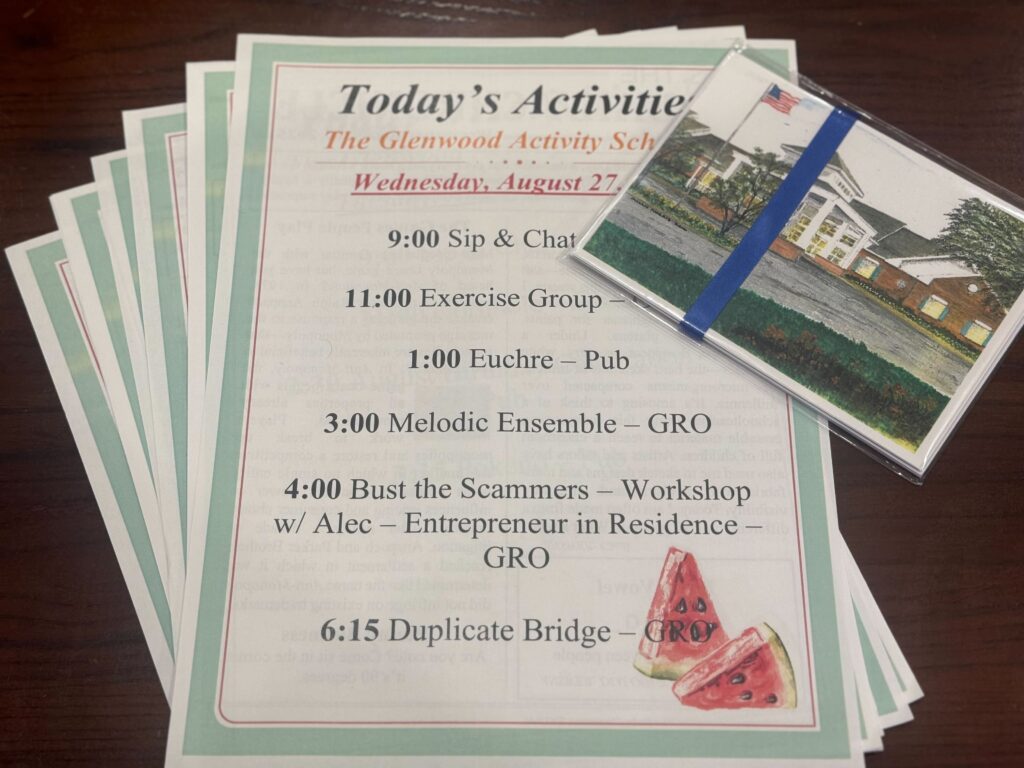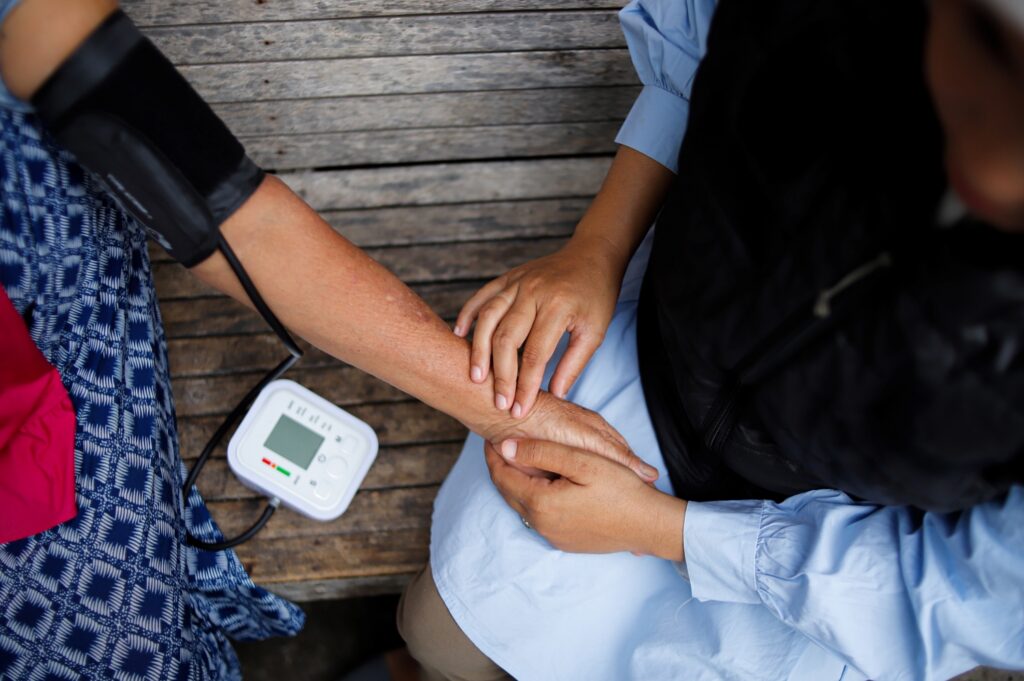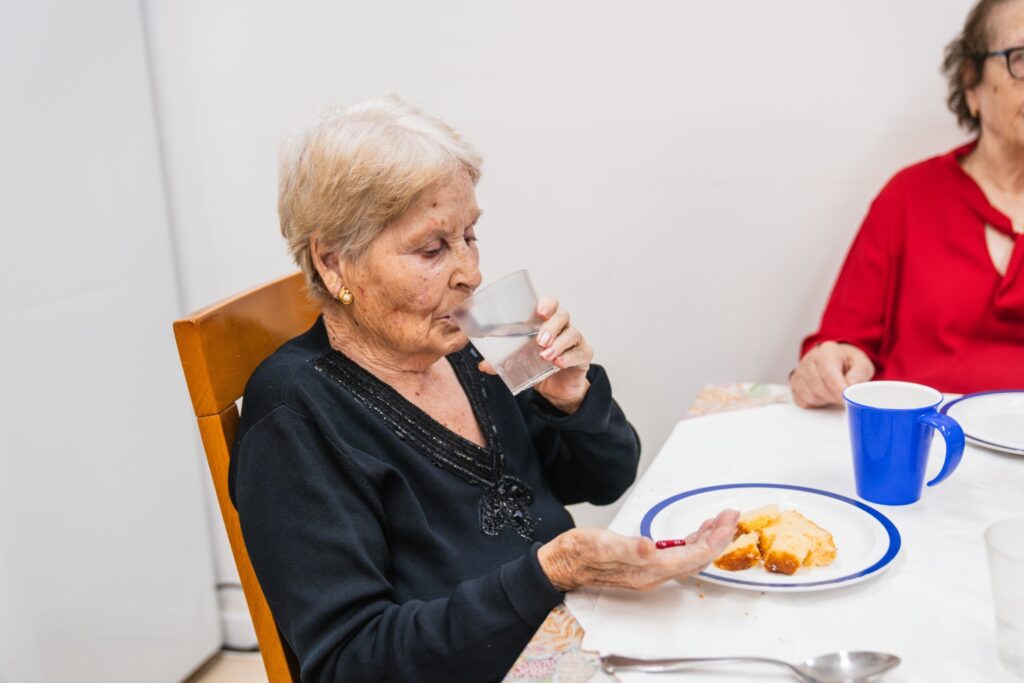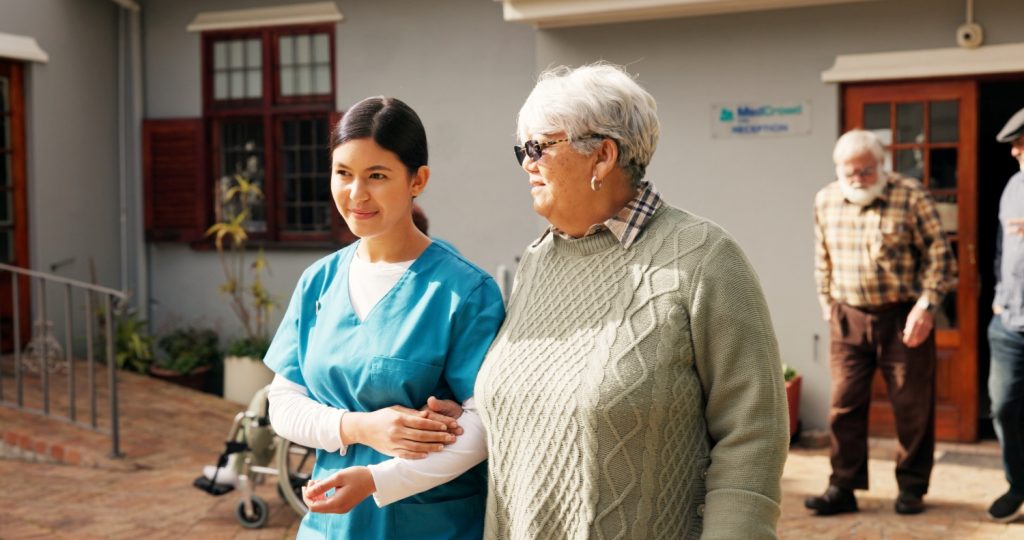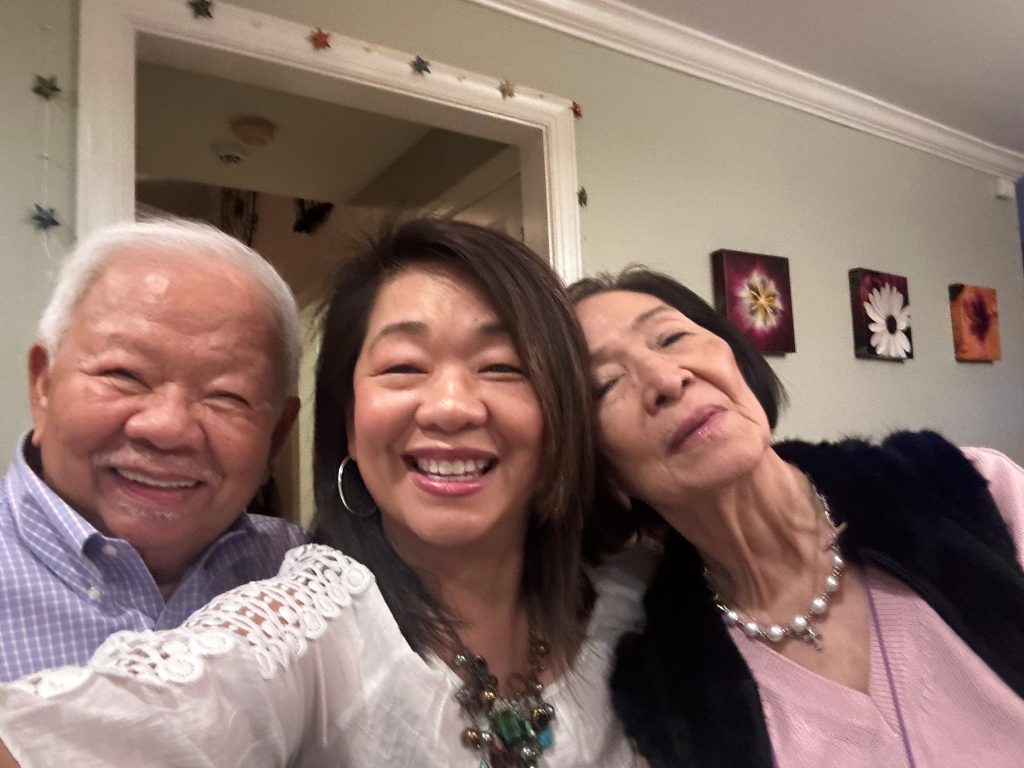Abstract
This article explores how grandmothers raising grandchildren in skipped-generation households fostered their healthy social and emotional development by helping them cope with emotional difficulties from parental absence and presence, grandfamily stigma, and prior adverse experiences. Grandmothers helped grandchildren cope by assuring them they could stay for as long as they wanted or by promising they (the grandmothers) would never leave; helping children reframe narratives about parental absence; using empathy and truth-telling to help children recover from sporadic parental involvement; allowing children to decide what to call their grandparents and how to explain their relationship; relying on talking/listening to create a sense of safety; and seeking institutional support.
Key Words
social development, emotional development, parenting, coping strategies, grandparent caregiving, skipped-generation households, grandfamily, kinship care
Grandmothers fostered healthy social and emotional development among their grandchildren in part by helping them cope with emotional difficulties resulting from three contributing factors: parental absence and presence, grandfamily stigma, and prior adverse experiences.
Parental Absence and Presence
Like other children living in skipped-generation households, children in my study experienced a range of parental involvement, from no involvement to sporadic and regular involvement. Consequently, grandmothers confronted a range of children’s emotional responses, including separation anxiety and separation anxiety disorder—the latter characterized by extreme distress in the absence of a primary caregiver. Research has shown that children raised by grandparents often experience disrupted attachment relationships with their birth parents, placing them at increased risk for emotional distress (Blake et al., 2023).
Although this piece brings attention to how grandmothers addressed children’s social and emotional difficulties, it’s important to note that the majority of grandmothers I interviewed insisted their grandchildren loved their mothers, even if they weren’t in their care, and some grandmothers mentioned the children’s attachment to their mothers. A minority of grandmothers made the same claims about the children’s love and attachment to their fathers.
Grandfamily Stigma
Regardless of increases in “non-traditional” families—including grandfamilies, adoptive, same-sex, blended, married-like, cohabitating, and multigenerational families—the biological parent-child, nuclear, heterosexual family is still considered the ideal or “normal” family. Privileging the heteronormative, biological, nuclear family over non-traditional families is reflected in childrearing institutions, laws, and public policies, as well as in American social norms and values. Children whose family structures are characterized as non-traditional may experience feelings of marginalization if perceived as “different.” Thus, grandmothers often helped grandchildren cope with social stigma related to their family structure.
Adverse Experiences
Grandmothers also helped their grandchildren cope with the impact of adverse experiences on their social and emotional development. Often children faced numerous difficulties before coming into their grandmothers’ care. Previous research shows that the more adverse experiences in childhood (e.g., physical and emotional neglect; physical, sexual, and emotional abuse; mother treated violently; household substance abuse; household mental illness; parental separation or divorce; incarcerated household member), the greater the likelihood of developmental delays and other problems (Center on the Developing Child, 2007).
In the next three sections, I discuss how grandmothers strategized to mitigate the impact of emotional difficulties on their grandchildren’s social and emotional development.
Dealing with Parental Absence and Presence
Grandmothers sought to fill the void created by parents’ inability or unwillingness to be there by being present, assuring grandchildren that they could stay with them for as long as they wanted, and/or promising that they would never leave. Fifty-year-old Dorothy, who used Child Protective Services and the police to become her grandson’s legal guardian and keep him in her care, captured the essence of some of these assurances:
“He [her grandchild] said, ‘Grandma, I don’t wanna go with my mom. I wanna stay with you.’ And I said, ‘You don’t ever have to go anywhere else, you can stay with grandma.’ And when he seen his mother coming he said, ‘Grandma, don’t forget I wanna stay here.’ And I say, ‘You don’t ever have to go. You can stay right with grandma.’ ”
Sixty-three-year-old Cora made a similar promise to her wary 15-year-old granddaughter:
“She sit down one day … Girl, it hurt me so bad. She said, ‘Everywhere I go somebody put me out.’ I say, ‘Why you say that?’ ‘My mama she puts me out.’ I say, ‘Grandmamma never’ll put you out.’ I said, ‘I never will put you out.’ And she got like a … li’l smile on her face when I said that. That hurt me so bad. I never will forget that.”
Being there was complicated by the children’s separation anxiety and abandonment fears. Grandmothers combated separation anxiety by explaining any anticipated absence, reassuring the children that it would be temporary, or sneaking away in hopes that their temporary absence would go unnoticed and not cause further emotional harm. Although Barbara, 41, had been raising her 4-year-old grandson Shaquille since he was an infant, he still suffered from separation anxiety. Barbara’s fiancé had encouraged her to assume responsibility for Shaquille and helped her raise him until his recent imprisonment, which exacerbated Shaquille’s separation anxiety.
She explained, “Anybody that he gets connected to he doesn’t want them to leave because mama already gone, then daddy (grandmother’s fiancé) gone now. It’s like, ‘Oh is mommy [Barbara] gonna go, too?’ So, I have to reassure him mommy not going nowhere. …The only way I leave you is when mommy go to heaven. … I understand you don’t want me to go but sometimes mommy have to go and mommy have to do things without you.”
Forty-one-year-old Sylvia was a grandmother who dealt with their grandchildren’s separation anxiety by sneaking away. Although Zoe was a happy child, she struggled with separation anxiety, complicating Sylvia’s need for parenting breaks.
‘Grandmothers negatively impacted by their grandchildren’s emotional challenges negatively impacted their grandchildren.’
She said, “When I snuck out the other night, my daughter watched her for me. … She was by the door in her highchair, so I didn’t go out that door, I went out this door. And my daughter said, ‘Mama she was all like, ‘Where grandma? Where grandma?’ And my daughter said, ‘Mama, then she started getting all sad.’ … She kept on saying, ‘Grandma gone be back?’ ”
Zoe’s sadness made Sylvia feel “bad” for taking her infrequent reprieves from caregiving. While the majority of grandmothers shared that they were attentive to children’s separation/reunion reactions, absent formal support, some were themselves negatively impacted by their grandchildren’s emotional struggles. Sylvia was one of several who admitted to depression, feeling trapped—at home with her granddaughter day in and day out—which created a feedback loop: grandmothers negatively impacted by their grandchildren’s emotional challenges negatively impacted their grandchildren.
Eventually, Zoe’s clinging to her grandmother’s every move caused Sylvia’s youngest child to regress emotionally as he vied for his mother’s attention, illustrating how being there was complicated by the children’s emotional struggles and their impact on grandmothers and other household members.
Grandmothers routinely faced the daunting task of explaining parents’ absence and helping grandchildren craft a perspective that would nurture, rather than undermine, their emotional well-being. Dorothy typified how grandmothers responded to the ongoing effects of parental absence:
“One time he said, ‘Mama, why don’t I see my mother and dad? They must be dead or something.’ I said, ‘No, they’re just not around.’ He said, ‘Mama, everybody else mama and daddy bring ’em to school. My grandmama brings me to school. And I’m sad.’ I said, ‘… Be thankful to God that you got somebody to bring you to school. Your grandma is here for you. You gotta be thankful to God for that.’ ”
Dorothy, like many others, also had to help her grandchild cope with parents’ presence; specifically, the negative effect of parents coming and going. Younger children “acted out” (e.g., tantrums, bed-wetting, potty accidents), and older children often blamed grandparents for non-reciprocal parental attachments. Whenever Dorothy’s grandson’s mother Tyronica came around, “he act[ed] out. …And it take him a while to calm down. But I tell her [Tyronica], ‘That’s his way of saying I’m angry at you.’ ”
Barbara helped her grandson Shaquille recover from his mother Talisha’s sporadic involvement and her behavior when she spent time with her son, including bringing him age-inappropriate gifts, showing up with different men, and showing up high on marijuana. She described:
“Sometimes when he would be with her, he would come back and have nightmares and his attitude would change. And he would regress. Because he was having accidents with her when he wasn’t having it with me—potty accidents. And she would spank him. And he would come back and he would be crying, ‘Oh, I’m a …’ No, baby. If you pee on yourself it’s alright.’ So, I had to fix that part. Because today he still cries if he about to have an accident. … And like the nightmares … she would leave him in the house while she go out. He wanna be with her but she sneaking out, then he’d wake up and she’s not there.”
Similarly, 58-year-old Lottie had to manage her three grandchildren’s emotional well-being when their mother Rachel visited. Lottie’s 11-year-old granddaughter Audra wet the bed when her interactions with her mother upset her. Lottie shared how she created safety for her granddaughter, who was hesitant to tell her how she felt, saying,
“The only time she’ll wet like that is if her mama say something to her and then she don’t come and tell me. … ‘I’ll say, ‘How come you didn’t tell me?’ ‘Mama told me not to tell you.’ ‘I don’t care what she says, she do something to you, you gotta come and tell me.’ ”
Lottie routinely reprimanded Rachel for coming into her home “screaming and hollering at her [Audra]” and threatened to terminate her visiting. Grandmothers managed the delicate balance between not severing their grandchildren from their parents and using whatever power they had to shape these interactions. Lottie used her legal guardianship to prohibit Rachel from interacting with her children when she felt she was unsafe to be around.
Grandmothers learned to be empathetic to the acting-out associated with parental visitations as well as to the negative behavior resulting from parents failing to visit. In both cases, they strived to balance understanding their grandchildren’s experiences and arming them with the truth. The father of Laverne and Leonard’s five grandchildren had recently moved and gotten married. His children’s pre-existing difficulties dealing with his absence were exacerbated by his departure and new relationship. Laverne, 54, showed how sensitivity and talking were critical to helping children process difficult emotions, and how grandmothers changed their approach as children got older:
“Now that they’re getting bigger it’s a little rougher to deal with because when they were little we could just grab ’em and go to Chuck E. Cheese or go to the beach. They’re too big for that now. They’ve started to see things more for themselves … He (grandson) was trying to smell his tail as old folks used to say. … So, I have to break things down to him every so often and catch my mouth and remember that he hurt, and he a child and don’t understand. ‘You just don’t want me around my daddy.’ ‘Baby, stop that lie. Don’t never let nobody tell you that lie. I’ve never stopped him from being around you or coming to get you or whatever. Don’t ever let nobody tell you that … I ain’t trying to fight nobody for nobody kids. I kept you for a reason; to keep you safe, to raise the five of you together as brothers and sisters.’ ”
‘Grandmothers learned to be empathetic to the acting-out associated with parental visitations as well as to the negative behavior resulting from parents failing to visit.’
Children experienced a variety of reactions to parental absence, including anger, self-blame, emotional regression, acting out, and depression. When their individual coping strategies didn’t work, grandmothers sought institutional support to help their grandchildren deal with their emotional difficulties.
Laverne demonstrated grandmothers’ use of institutional support, returning to Michael Reese Hospital (where her grandchildren had been treated for minor illnesses and surgeries) when she noticed a change in her 14-year-old granddaughter Keba’s behavior after spending time with her father:
“Well, I just recently took her … and had her talk with a psychiatrist at Michael Reese Hospital. And he put her on this medication. I don’t know. … Keba got a lot of anger towards him (dad). But then she had a lot of love for him. So, things were just back and forth, back and forth. Then when she came back home, it was pretty much she brought some of it with her. And I just kept seeing different actions from her that concerned me, so I took her to the doctor. … Mood swings. … a difference in her behavior. She take her Lexapro three times a day and the other one she just take a half of it … it seems to help keep her … calmer. She don’t fly off the handle as fast, as easy.”
Beulah, 58, was also managing her granddaughter’s response to not being in her parents’ care. Her experience spotlighted the importance of social service organizations offering services to kinship caregivers seeking treatment for grandchildren. For instance, in support groups, where grandmothers felt they could openly share their caregiving experiences, they learned a great deal about obtaining the resources and services their grandchildren so desperately needed. In Beulah’s support group, grandmothers bounced ideas off one another before plotting a course of action. Concerned that her granddaughter was taking things from her to give to her mother, who was raising her six siblings, Beulah shared and was encouraged by fellow participants:
“And then there was a time where I had laid money on the table and the money walked off. And things that I put in the refrigerator and things would just walk off and just disappear. And nobody seems to understand where. I mean, even like gold, diamond rings, and all that kind of stuff was just disappearing out my home. … So, I was talking to the other people about the incidents and things that happened. So, they say ‘Well, Beulah, why don’t you call LaRabida [a hospital known for helping troubled children] and see if you can’t get a psychiatrist. Because it’s a lot of times stuff may be going on that you don’t know.’ ”
Children’s behavioral problems, especially habitual lying, stealing, anger, and acting-out in school, strained grandmothers’ capacity for empathy. These problems not only challenged grandmothers’ ability to exercise empathy, but also exceeded their personal resources. In these cases, many grandmothers resorted to informal support systems and institutional ties such as healthcare providers, caseworkers, and educators. Assistance from formal support consisted of assessments aimed at getting at the heart of children’s behavioral issues, advice on symptom-management, medication for symptoms, and mental health services. Grandmothers who sought institutional support were better able to care for children with complex behavioral and emotional conditions than those who did not.
Managing Grandfamily Stigma
Existing research focuses on the stigma grandparents experience as primary caregivers to their grandchildren (Hayslip et al., 2020); however, I found that grandmothers were less concerned about their own stigma than their grandchildren’s. Although 41-year-old Sholanda and her husband had raised Dana since she was a newborn, Shalonda still introduced herself as Dana’s grandmother, which yielded a recent conversation with Dana. Shalonda explained:
“She got me in a corner and she said, ‘Mama, I been intending to talk to you. Can you quit telling them people you my grandma?’ And I think maybe now she’s at the age where like with school things and things that she do … everybody there with their mother and father. So, she call us Mom and Dad so you wouldn’t know unless we told you. So, she said, ‘Can y’all do that?’ So, I was like, ‘Okay I ain’t got no problem with that.’ Because she’ll tell people if she wants them to know.”
Shalonda was one of many younger grandmothers who agreed to be called “mama.” Unfortunately, older grandmothers were unable to pass as mothers, making it more difficult for them to reduce a child’s stigma, as 81-year-old Virginia described with her great-grandson:
“At school the other kids’ moms and dads are there. Who is there with him? His grandma. They say, ‘Oh, Omar here’s your grandma.’ It hurts. And the other day we went to his competition for the band, all the parents were there waiting in the cafeteria, because they had their solo competition. And I’m sitting there. He had told his mother, this time she came. Gregory, one of his little classmates, he told Gregory when he came back from the judges, ‘See, Gregory, I told you I had a mom!’ Isn’t that sad? I wanted to cry.”
Marian, 74, had a different response to her great-granddaughter Milena’s stigma. When Milena’s teacher corrected her, telling her that her great-grandmother was not her mother, Marian pulled the teacher aside, telling her that it wasn’t her call “to make that distinction in front of other people. It makes her feel less than, or like she’s deficient in some kind of way.” Although Marian reprimanded Milena’s teacher, she was unwilling to privilege parent-child families or to be complicit in further stigmatizing grandfamilies.
She said, “Milena started that crap with me, coming to pick her up. Everybody else saying mommy, so she’s running up to me saying mommy. Because she wants to belong. … And I greet her and I say, ‘Ooh, she’s not here. But I’m here. And who am I?’ ‘Well, I know, you’re grandma, but’—I said, ‘Mmm hmm, yeah. And guess what? I love you two times and they only said love them one time.’ Until she can understand it.”
Marian didn’t stop at damage control with her great-granddaughter but worked to change the perception of grandfamilies among the children in her school:
“And then I made myself visible more, in terms of her field trips and just volunteering, until the other kids began to want to be with me more than they wanted to be with their mommies, because their mommies were at work. Now, legitimately, their mommies could not be there . … But because I was there, Milena saw me as a positive and then the kids saw me as a positive.”
Marian worked to change the perception of grandfamilies among the children in her school.
Grandmothers responded to the stigma their grandchildren experienced being raised in a non-traditional family by agreeing to be called “mama,” letting their grandchildren decide with whom to share the true nature of their relationship, and trying to mitigate other people’s responses to their family structure. When these strategies failed or when grandmothers were too old to be seen as mothers, grandmothers encouraged their grandchildren to give thanks for having grandparents and other relatives to love and care for them.
Caring for Children with a History of Adverse Experiences
The circumstances surrounding children’s transition into grandparents’ care made it important for grandmothers to be sensitive to the impact of any adverse experiences on their grandchildren. Because they saw children as victims of their circumstances, grandmothers went to great lengths to cause no additional harm, including not using physical discipline (or using it significantly less) even if they had done so with their own children. Instead, grandmothers stressed listening and talking to their grandchildren to create a sense of safety.
Faith, 48, had been raising her 3-year-old granddaughter, Schuyler, for a year because of Schuyler’s parents’ drug addiction, related criminal activity, neglect, and abuse. Faith described the difference between raising her three children (including Schuyler’s father) and her granddaughter: “Because mines, I had to look at them and they knew. I didn’t have to open my mouth. This one, I could look at her and she still does.” Faith spent more time talking and explaining things to Schuyler than with her own children, with whom she resorted to using physical discipline to get them to behave:
“Because she’s been through so much … and I don’t want to mistreat her. … that’s not gone be fair to her, she needs to grow up a happy young lady. She doesn’t need to be mistreated; she’s already been mistreated for the first two years of her life. Actually, not the first two years but when she was in her mama belly.”
When Faith mentioned that she didn’t want to mistreat her granddaughter, what she meant was that Schuyler wasn’t as well-behaved as her children had been and she didn’t want to use physical discipline to make Schuyler behave. Faith took into consideration that Schuyler hadn’t been taught how to behave by her parents, which meant that she couldn’t have the same expectations that she had for her own children. Faith also took into consideration that Schuyler had a history of abuse.
Most grandmothers described using talking to “get an understanding” with their grandchildren, which, as Cora explained, meant addressing disciplinary and behavioral issues without resorting to physical discipline:
“I don’t beat my grandchildren. We can talk and get that understanding. That’s the greatest thing in the world … But you don’t have to beat no child just all the time, just hurting them kids! You can just sit down and talk with them.”
While Cora admitted to “popping” (using her hand to hit them on the bottom) her grandchildren, she distinguished it from whipping or beating them. Instead, she communicated her expectations for and corrected her grandchildren’s behavior by talking to them about it.
Consistent with other research, getting an understanding required grandmothers to be explicit with language and to talk to grandchildren instead of at them. Marian provided this powerful example, which also illustrates the value she places on maintaining eye contact when communicating:
“I don’t have to hit Milena. I can say … ‘Come here.’ She hates for me to get down on my knees and look at her face. She hates it, you ought to see it, she just wilts like a flower. … I get in her face, and I say to her, ‘How many times did I tell you to do that? Do you think I’m playing with you? Did you not hear what I said to you?’ And when I talk low like that, she don’t like it. And she just cringes. … And she’ll think about it and she’ll say, ‘Grandma, I’m sorry. I apologize. Would you forgive me?’ And I say ‘Yeah.’ ”
Like the grandmothers in Social Work Professor Priscilla Gibson’s (2005) research on the ways in which grandmothers raising their grandchildren used communication in their parenting, grandmothers in my study listened to their grandchildren.
“Because kids got a right to say something to you as well as you have something to say to that child,” Cora explained. “A child can tell you something. I tell my kids, ‘Grandma got all ears. All we can do is sit down here and talk about it.’ They trust me.” Cora’s willingness to listen made it safe for her grandchildren to bring her their cares and concerns. Similarly, Marian created an environment where her great-granddaughter could express herself and share her feelings:
“And then she’ll come to me and say … ‘That was not nice, what you said to me, and I think you owe me an apology.’ And I’ll say to her, ‘Well, let me think about it. Mmm hmm.’ … and I say, ‘Milena, you know, you were absolutely right. I apologize and will you forgive me?’ She says, ‘yes’ and then we’re okay.”
Grandmothers also used talking to create safety for children grappling with the effects of trauma, as 58-year-old May did to help her 7-year-old granddaughter, McKayla:
“When she [granddaughter] first moved in with me … she would have these nightmares about people doing things to her. And I had to sit her down and explain to her, ‘Look, I’m not gonna let nobody bother you or hurt you. Your daddy’s not gonna let nobody hurt you! Your uncle Deangelo’s not gonna let nobody hurt you, and your auntie Maura. Nobody’s gonna hurt you.’ ”
May was sensitive to the fact that McKayla “been through a lot. Because like I say, she didn’t get to be a baby.” In addition to using talking to create safety for McKayla, May used it to teach and re-teach her:
“She’s so mature. It rained last week and she said, ‘I can see the rainbow in the bathroom window and the clouds and everything, and I made a wish. And I wished I had a baby.’ I said, ‘Girl, you 7 years old, the only baby you’re gonna get is through those dolls you got upstairs! Miss Dora the Explorer. That’s it!’ ”
May interpreted McKayla’s desire for a baby as too mature, given her age. So, she redirected her to baby her dolls, not to having a baby of her own. Like other grandmothers, May used talking to impart knowledge that corrected misinformation about appropriate thoughts and behaviors that came from parents or others, and from being in what grandmothers perceived as toxic environments. When McKayla urged her grandmother to also make a wish on the rainbow, May also used it as an opportunity to teach her to direct her wishes “to God.”
Conclusion
When grandmothers confronted issues beyond their grasp or when talking was ineffective, they recognized their inability to create safety, address disciplinary and behavioral issues, and teach and re-teach on their own. The rapport they built with their grandchildren, while critical to their social and emotional foundations, would not protect them in the world beyond their door. In these cases, grandmothers elicited support from their informal and formal networks to provide boy children with role models for manhood, to help children heal from various forms of abuse, to encourage their grandchildren to listen to them, and to reinforce the lessons they were trying to impart. Grandmothers also advocated on their grandchildren’s behalf by strategically navigating and using the legal system, healthcare professionals, caseworkers, and kinship support groups to get them the resources and services they needed.
LaShawnDa Pittman, PhD, is an associate professor of Ethnic Studies and the Joff Hanauer Honors Professor of Western Civilization at the University of Washington in Seattle.
Photo credit: Shutterstock/Monkey Business Images
References
Blake, A. J., Infurna, F. J., Castro, S. A., Webster, B. A., Dolbin-MacNab, M. L., Smith, G. C., Crowley, D. M., & Musil, C. (2023). Intergenerational patterns of attachment in custodial grandfamilies. Journal of Family Psychology, 37(8), 1148-1158. https://doi.org/10.1037/fam0001150
Center on the Developing Child (2007). The impact of early adversity on child development (InBrief). www.developingchild.harvard.edu
Gibson P.A. (2005). Intergenerational parenting from the perspective of African American grandmothers. Family Relations, 54(2), 280-297. https://doi:10.1111/j.0197-6664.2005.00022
Hayslip Jr, B., Knight, R. P., Page, K. S., & Phillips, C. (2020). Thematic dimensions of grandparent caregiving: A focus group approach. Grandfamilies: The Contemporary Journal of Research, Practice and Policy, 6(1), 1-16.

